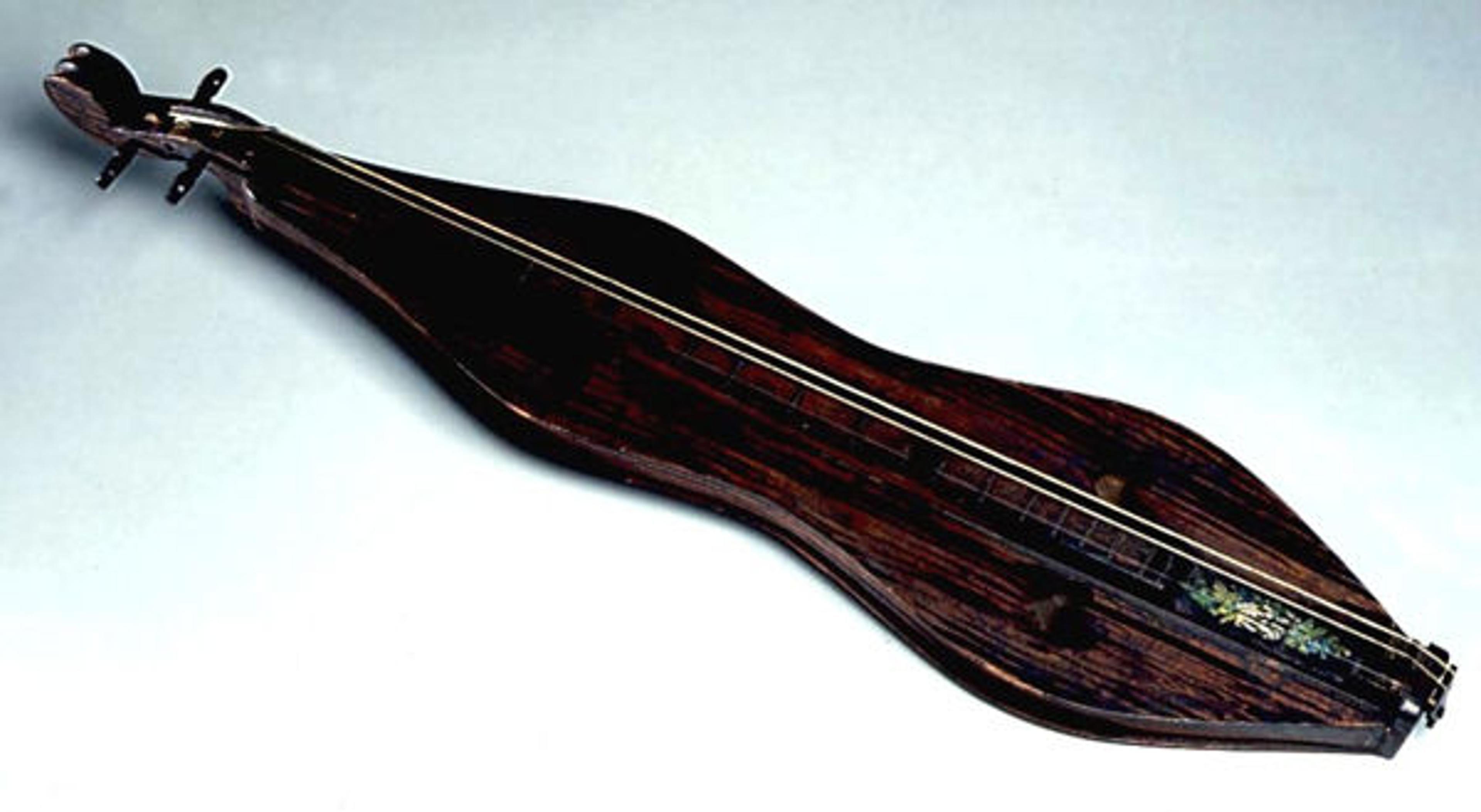
Charles Napoleon Prichard. Appalachian dulcimer, late 19th century. American. Huntington, West Virginia, United States. Wood, metal. The Metropolitan Museum of Art, New York, The Crosby Brown Collection of Musical Instruments, 1889 (89.4.988)
«On a recent morning I sat down with a number of journal articles and folders in preparation for the cataloging of the Met's collection of Appalachian dulcimers. I tapped my foot along to the locomotive beat of the old-time fiddle tune "Sugar Hill" as it drifted over from my computer speakers a few feet away, and leafed idly through one particular folder which contained all known information and correspondence relating to the best-documented of the Museum's dulcimers: 89.4.988.» I pulled out a letter written, in 1953, by Emanuel Winternitz, the celebrated former curator in the Department of Musical Instruments. Prepared to see another vague and minimal discourse with a dulcimer maker who wanted measurements to use on his historical models, I sighed and sat a little lower in my chair. When I read the address line, however, my eyes bugged:
"Dear Mr. Seeger . . ."
As an undergraduate student of ethnomusicology, one with a bourgeoning specialty in Appalachian music, coming across personal correspondence with a figure as exalted as Charles Seeger left me positively gobsmacked.
It also left me intrigued. Surely Charles Seeger, husband to famed modernist composer Ruth Crawford Seeger, father of renowned American folk music scholars and performers Pete and Mike Seeger, and himself one of America's most highly respected musicologists, would not have taken interest in this particular instrument without good reason. His letter, and the scholarly article in The Journal of American Folklore to which it related, would reveal that I was correct in my belief.
This Appalachian dulcimer, made in the late nineteenth century, is in astoundingly good shape. Although well-preserved instruments are in many respects easier to study, this dulcimer's condition also served in some sense to mask the instrument's significance. It's a double-bouted (hourglass-shaped) mountain dulcimer with a fake wood grain painted on the surface and a worn floral pattern applied to the strum hollow. It has three feet on the back—ostensibly to elevate it off a playing surface—which is unusual, but not shocking. All told, it was nothing if not a typical example of a modern dulcimer; hourglass bodies now comprise a significant portion, if not the lion's share, of dulcimers in circulation.
In point of fact, this instrument looks typical only because it belongs to a group of dulcimers in whose image nearly every subsequent double-bouted model was designed: those made by Charles Napoleon Prichard of Huntington, West Virginia. Prichard produced this instrument before the late 1880s, when it was gifted to the Museum by Mary Elizabeth Adams Brown, and well after the first-known examples of this type were made, around 1863. This instrument and its few remaining siblings are the oldest double-bouted mountain dulcimers known to modern scholarship.
While Prichard's instrument is certainly the crowning jewel of the Met's Appalachian dulcimer collection, four other instruments document the history of the instrument and some of its innovative development between the late nineteenth and mid-twentieth centuries.

Highlights of Charles Napoleon Prichard's dulcimer include a painted wood grain and a floral pattern on the strum